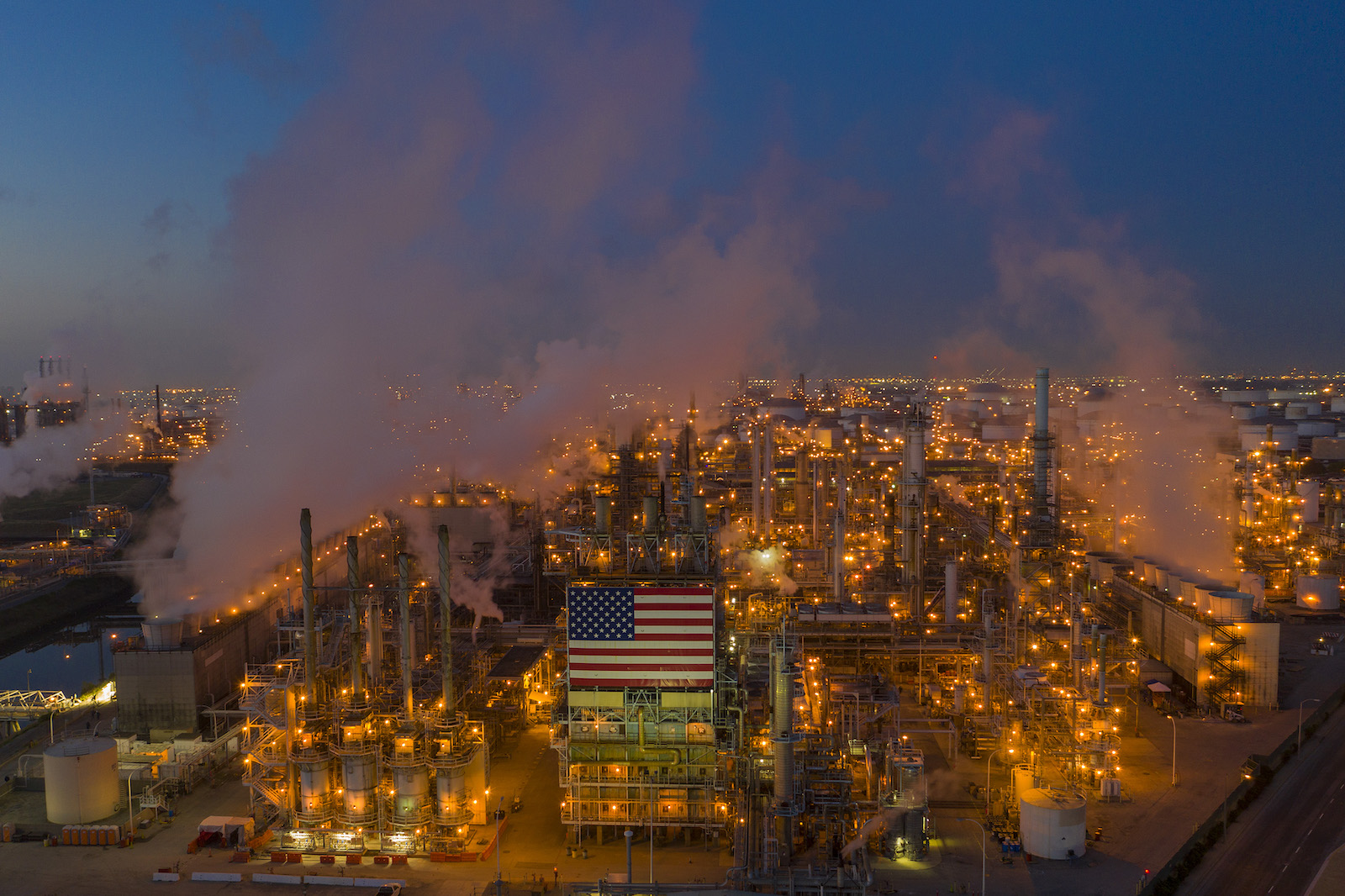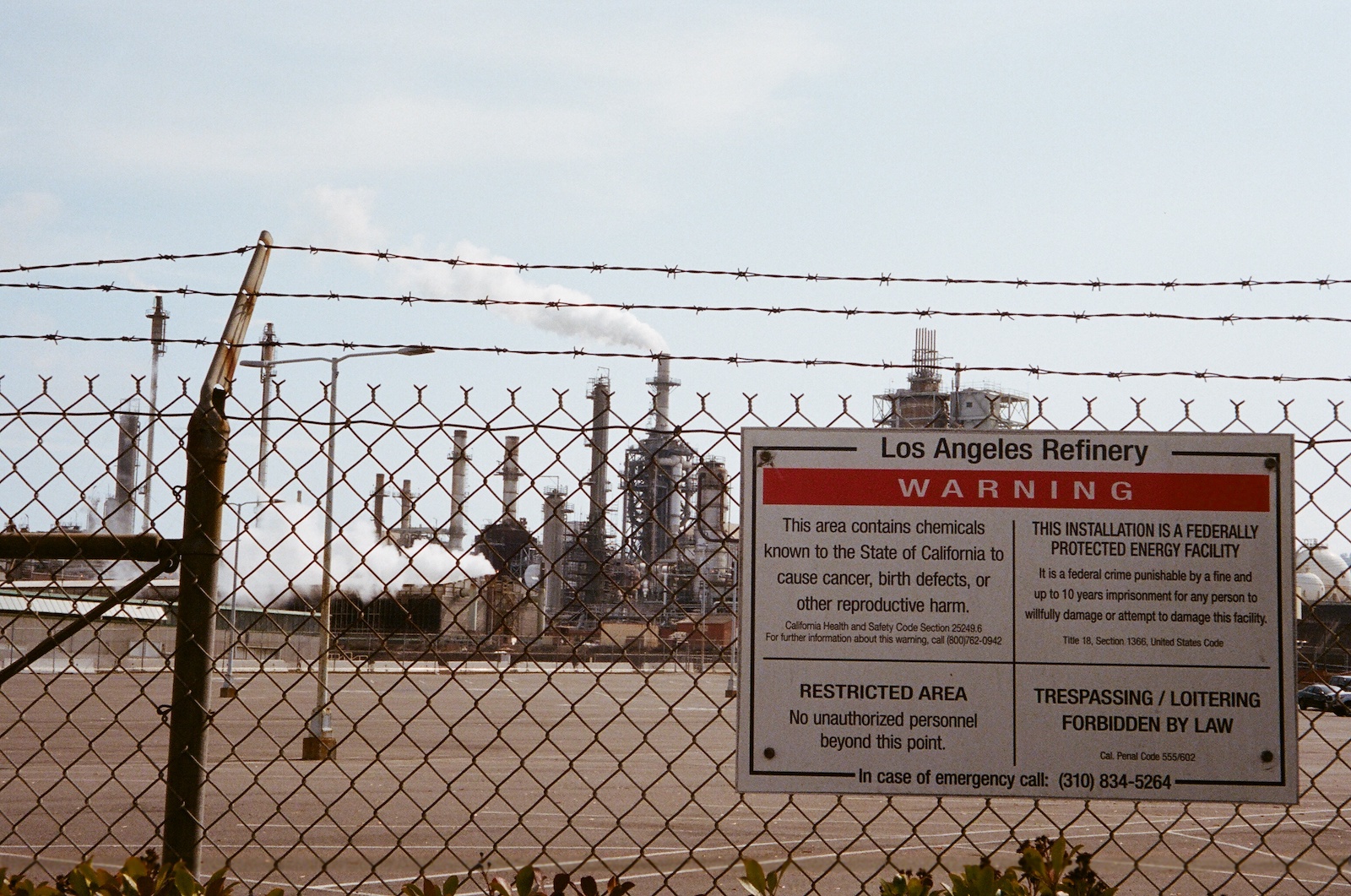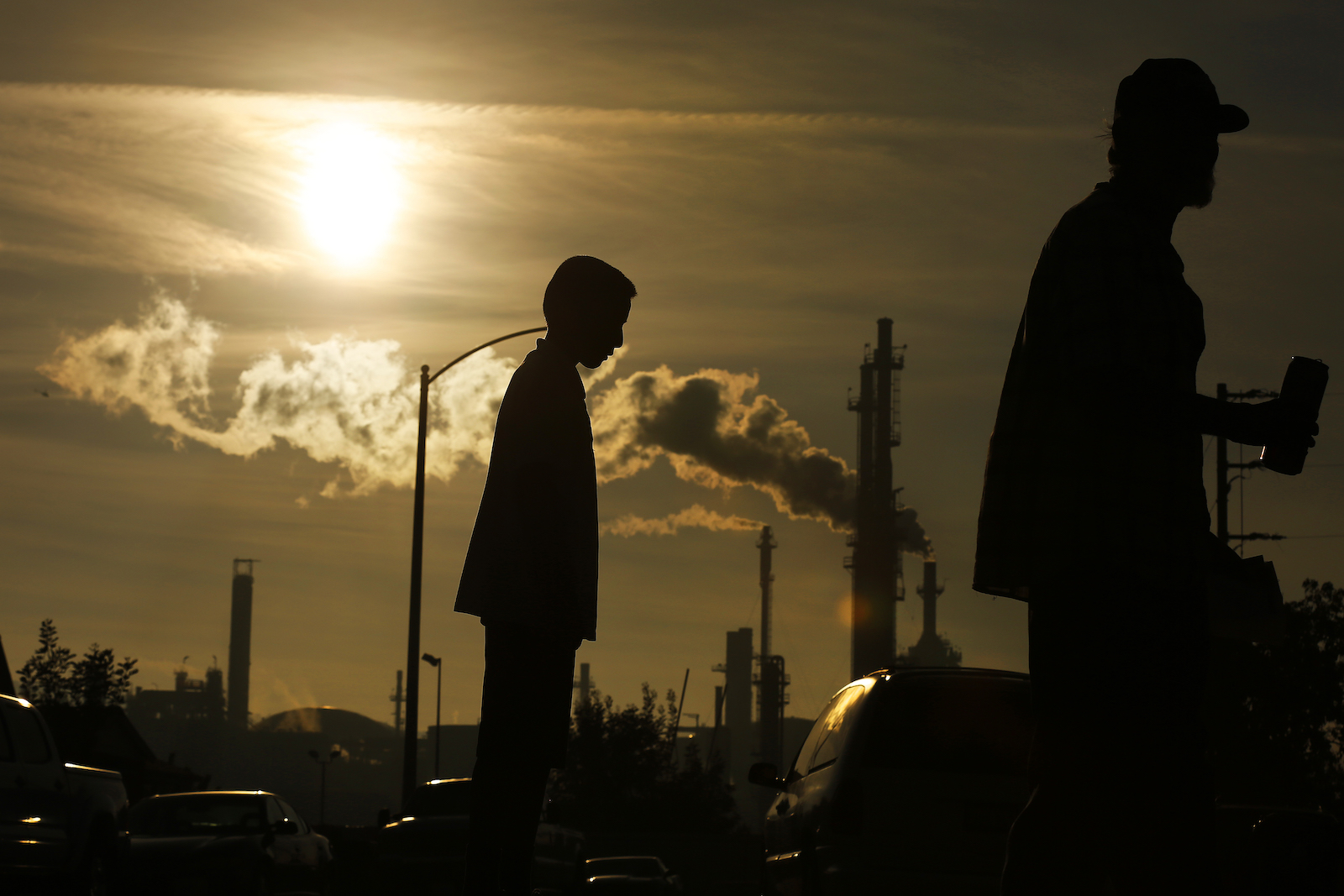Across the globe, the amount of pollution you breathe is highly dependent on where you live. This is apparent in Southern California, where the combination of dust, sulfur oxides, and nitrogen oxides known as smog has been on the rise over the last two decades. Between 2010 and 2017, Southern California experienced a 10 percent increase in deaths related to smog, hitting communities of color across the Southern Los Angeles and Inland Empire regions the hardest.
On Friday, however, as world leaders gathered in Glasgow, Scotland, to discuss efforts to curtail climate change, a 13-member regulatory board in Southern California approved a major new rule, known as Refinery Rule 1109.1, that could dramatically clean the region’s air.
Decades in the making, the regulations will require 16 facilities, including 12 oil refineries located in Los Angeles, San Bernardino, and Orange Counties, to install pollution controls on outdated equipment, most notably heater and boiler systems, by 2031. The rule was under consideration because the air district had failed to meet federal smog standards, and also because the state’s environmental justice law, AB 617, targeted cleaning up the air in industry-adjacent communities across the state.
Passed in 2017, AB 617 directs local air districts to speed up refinery retrofits to cut pollution and also work with community members to develop emission reduction plans. Local air quality regulators faced pressure to pass the refinery rule under both provisions of AB 617. The rule comported with the law’s mandate to hasten refinery upgrades, and communities included the passage of the rule as a priority in their emissions reduction plan.
The new pollution control equipment will reduce harmful air pollutants — particularly nitrogen oxides, or NOx — by as much as 8 tons every day. The South Coast Air Quality Management District passed the rule unanimously after two hours of public comment and deliberation on Friday morning.
“This is a critical ruling and moment,” said Julia May, a senior scientist at the environmental justice group Communities for a Better Environment. “You can’t completely clean these industries up — they’re inherently dirty — but in the meantime of a transition away from them, this is part of what we can do to require them to not put out these health-harming pollutants into communities.”

While smog levels across the world have been on the decline since the 1970s, last year Los Angeles experienced its worst smog levels in nearly 30 years. Air pollution, including that from smog, damages the lungs and can trigger asthma attacks, heart attacks, and strokes. In Southern California, more people die from air pollution than traffic deaths and crime-related deaths combined. Friday’s ruling, which requires roughly 300 pieces of equipment including heaters, boilers, gas turbines, and flares — some more than 50 years old — to be upgraded or modified, is projected to help prevent nearly 400 premature deaths and more than 6,000 asthma attacks in the region over the next 15 years.
It’s bound to have a tremendous impact on the roughly 110,000 residents of Carson and Wilmington, two communities that constitute the “fossil fuels capital” of the Western United States. The communities host six of the 16 facilities impacted by the new rule, including five major oil refineries and an asphalt plant.
In total, the air district estimates that the rule’s public health benefits are worth $3.49 billion over the next 15 years, due to fewer residents requiring hospitalization and missing work due to sickness. The board also estimates that the rule will prevent 21,400 missed work days due to sickness, and that it will also lead to the creation of more than 1,800 jobs related to construction and monitoring every year for the next 12 years.
According to May, these benefits exemplify how the U.S. can transition away from a dependence on dirty energy. “We can do this in a reasonable way,” she said. “While we do a just transition away from fossil fuels we can, and have to, protect the workers and create new jobs while we phase in clean energy.”
Before Friday, the rule sat in limbo since at least 2015 due to heavy opposition from affected companies like Chevron, Tesoro, Marathon, and Phillips 66 — and even internal struggles within the air board. In 2015, the air board originally moved to implement a new smog regulation, but it was rejected by a few board members, including Los Angeles City councilmember Joe Buscaino, in favor of a weaker plan put forth by the oil industry. The dissenting members claimed more time was needed to implement the rule, which ultimately ended up becoming rule 1109.1.
Buscaino, who voted in favor of 1109.1 this time around, said on Friday that his decision-making process “recognized the fact that refineries have employed [his] friends and family — good union-paying jobs.” Buscaino’s district includes Wilmington and the Port of Los Angeles.
Over the last six years, industry leaders claimed it was a burdensome task to install new equipment. The air district estimates it will cost the 16 facilities around $2 billion in total to comply — much less than the estimated $3.5 billion worth of public health benefits.
Byron Chan, a Southern California attorney with the environmental law firm EarthJustice, told Grist that the sticker price of compliance reflects historic inaction on the part of industry. “They’ve barely done anything for the past 30 years,” he said. “It’s like if you never went to the dentist, and the first time you went to the dentist you were 55 and racked up a super expensive charge — but if you had been going to the dentist every six months for your entire life, you wouldn’t have had to be put in this situation in the first place.”*
Representatives from Phillips 66, an operator of two major refineries in Los Angeles County, declined to respond to Grist’s request for comment, while Marathon Refinery did not respond at all to Grist’s request before publication. According to an analysis by Communities for a Better Environment, the Marathon Refineries and Phillips 66 refineries located in Carson and Wilmington are among the facilities that will be most impacted by rule 1109.1. In 2016, Marathon reported releasing 1.6 million pounds of NOx, and Phillips 66 reported releasing 1.4 million pounds of NOx.
Many local polluters originally favored a pollution regulation that had been in use since 1993. The Regional Clean Air Incentive Market, or RECLAIM, program mimicked a cap and trade procedure, allowing refineries to pay to pollute. Instead of directly ordering every polluter to install specific clean-air technology, the program allowed facilities to purchase credits from other, cleaner facilities, which in turn allowed them to exceed their permitted emissions. Within a few years of its initial implementation, it became cheaper to pay for excess pollution than to lower emissions by installing new equipment. In the end, air pollution and smog across the Southern California basin ended up increasing with the implementation of RECLAIM.
The new rule replaces the RECLAIM program, but some advocates contend that the air district still favored industry over communities. “Refineries know that if they push even a little bit, that the air district will likely make room for whatever they’re arguing,” Chan said. “Where, on the other hand, communities are never given the benefit of the doubt.”

During the most recent drafting process for the new rule, a Grist analysis of meeting recordings found that the air district met with refinery ownership groups and oil lobbyists nearly five times more often than they met with environmental groups. (The air district did not respond to Grist’s request for comment in time for publication.)
Utilizing emails released through the California Public Records Act, Grist was able to confirm that representatives from Southern California refineries — specifically the Phillips 66 plants located in Carson and Wilmington — were in constant contact with the air board during the drafting of the regulations over the past year. In one email thread, a representative from the air district adopted an informal and light-hearted tone with Phillip 66’s lead environmental scientist as they talked about potential substitute compliance plans that would allow the refinery more wiggle room to lower its emissions.
The substitute plans discussed in those emails, known as “I-Plan,” “B-Cap,” and “B-Plan,” were ultimately included in the passage of refinery rule 1109.1. The “B-Cap” plan institutes a “mass emission cap” that will allow refineries to trade emissions within their respective facilities, rather than just directly meeting the standards for specific pieces of pollution equipment. In other words, if a refinery’s flaring emissions are lower than the proposed standards, they can use that reduction to excuse their excess emissions from, for example, a boiler or heater system.
In the end, however, the rule has met acclaim from both community groups and legislators as a step in the right direction. It offers tangible benefits and strong reduction goals on the heels of another major oil regulation that was just passed in the region: Last month, California environmental justice groups rejoiced after Governor Gavin Newsom announced a new ruling that would ban the permitting of oil and gas wells within 3,200 feet of community sites such as homes, schools, and hospitals. The new rule came after years of advocacy and a recent Grist analysis showing the troubling prevalence of oil wells — and the pollution they generate — in California’s Black, Latino, and low-income communities, particularly across the Southern California Basin.
“It’s a tragedy that these wins didn’t happen before,” May said. “But they’re big wins, and now we’ll be fighting for strong implementation.”
*Editor’s note: Earthjustice is an advertiser with Grist. Advertisers have no role in Grist’s editorial decisions.
Naveena Sadasivam contributed reporting to this story.


